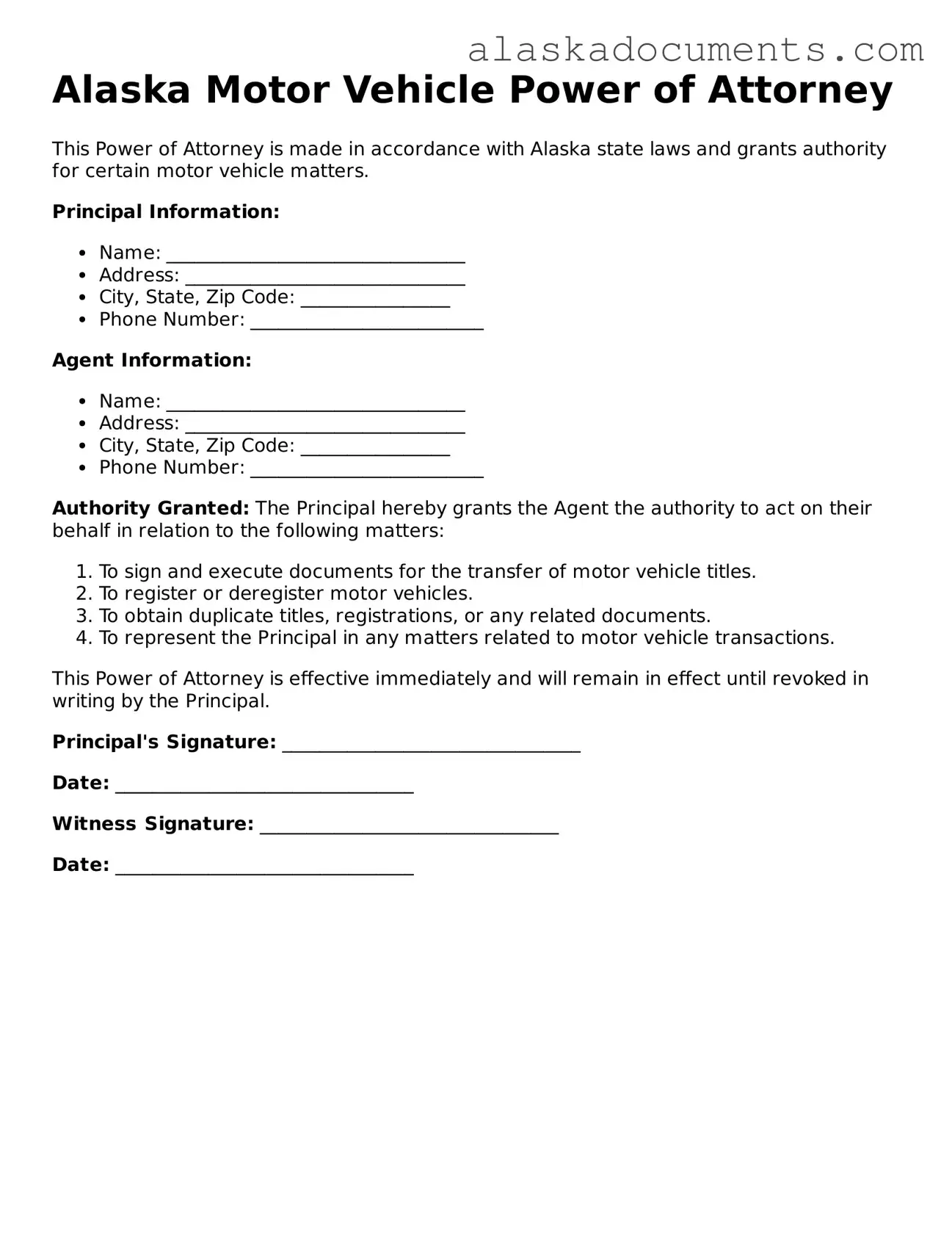The Alaska Motor Vehicle Power of Attorney form shares similarities with the General Power of Attorney. Both documents empower an individual to act on behalf of another in various legal matters. While the General Power of Attorney can cover a broad range of financial and legal decisions, the Motor Vehicle Power of Attorney is specifically tailored for vehicle-related transactions. This focused approach allows the designated agent to handle tasks such as title transfers, registration, and other motor vehicle-related responsibilities without needing to address unrelated matters.
Another document akin to the Alaska Motor Vehicle Power of Attorney is the Durable Power of Attorney. This document also grants authority to an agent to make decisions on behalf of another person. However, the Durable Power of Attorney remains effective even if the principal becomes incapacitated. This distinction is crucial for individuals who want to ensure that their affairs, including those related to motor vehicles, are managed continuously in case of unforeseen circumstances.
The Limited Power of Attorney is another similar document. Like the Alaska Motor Vehicle Power of Attorney, it restricts the agent's authority to specific tasks. This can include handling a single transaction or a defined set of transactions. While the Motor Vehicle Power of Attorney is explicitly focused on vehicle matters, the Limited Power of Attorney can be tailored for various purposes, such as real estate transactions or financial matters, providing flexibility in how authority is granted.
In addition to these vehicle-related documents, understanding how to properly manage shipping documentation is crucial. For example, the FedEx Bill of Lading serves a pivotal role in the transportation of goods, summarizing the terms for shipping and ensuring accountability. For more detailed insights on this essential document, you can visit TopTemplates.info, which provides a comprehensive overview of the FedEx Bill of Lading and its significance in logistics.
The Vehicle Bill of Sale is also comparable, although it serves a different function. This document is used to record the sale of a vehicle and outlines the terms of the transaction. While it does not grant authority like the Power of Attorney forms, it is often used in conjunction with them during vehicle transfers. The Bill of Sale serves as proof of ownership transfer, which can be critical when the Power of Attorney is utilized to facilitate the sale or transfer of a vehicle.
Lastly, the Release of Liability form is similar in that it is often used during vehicle transactions. This document protects the seller from future liabilities associated with the vehicle once it has been sold. While it does not grant authority, it complements the Motor Vehicle Power of Attorney by ensuring that the seller is no longer responsible for the vehicle after the transfer. Both documents are essential in the process of legally transferring vehicle ownership and ensuring that all parties are protected.
